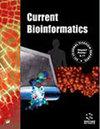人工智能、机器学习和深度学习技术在基因组学中的整合:DNA 和 RNA Seq 数据 NGS 分析的计算视角综述
IF 2.9
3区 生物学
Q3 BIOCHEMICAL RESEARCH METHODS
引用次数: 0
摘要
:在当前的基因组学和生物医学研究领域,人工智能(AI)、机器学习(ML)和深度学习(DL)的应用已成为范式的转变者。虽然传统的 NGS DNA 和 RNA 测序分析流水线在解码遗传信息方面表现出色,但测序数据的数量和复杂性却激增。人们需要更高效、更准确的分析方法。这导致了对人工智能/ML 和 DL 方法的依赖。本文重点介绍了这些工具方法,以缓解局限性并产生更好的结果。在管道自动化的帮助下,将这些工具集成到 NGS DNA 和 RNA-seq 管道中,我们可以提高研究质量,因为可以使用深度学习工具处理大型数据集。自动化有助于减少劳动密集型任务,帮助研究人员专注于其他前沿研究。在传统流水线中,从质量检查到 SNP 检测中的变异识别,所有任务都需要大量的计算时间,研究人员还必须手动输入代码,以防止人为手动错误,但借助自动化的力量,我们可以在相对较短的时间内顺利完成整个流程,因为自动化流水线可以运行多个文件,而不是传统流水线中的单个文件。总之,本综述论文揭示了将 DL 集成到传统管道中的变革性影响及其在优化计算时间方面的作用。此外,它还强调了人工智能驱动的解决方案在推进基因组学研究和实现数据密集型生物医学应用方面日益增长的重要性。本文章由计算机程序翻译,如有差异,请以英文原文为准。
Integration of Artificial Intelligence, Machine Learning and Deep Learning Techniques in Genomics: Review on Computational Perspectives for NGS Analysis of DNA and RNA Seq Data
: In the current state of genomics and biomedical research, the utilization of Artificial Intelligence (AI), Machine Learning (ML) and Deep Learning (DL) have emerged as paradigm shifters. While traditional NGS DNA and RNA sequencing analysis pipelines have been sound in decoding genetic information, the sequencing data’s volume and complexity have surged. There is a demand for more efficient and accurate methods of analysis. This has led to dependency on AI/ML and DL approaches. This paper highlights these tool approaches to ease combat the limitations and generate better results, with the help of pipeline automation and integration of these tools into the NGS DNA and RNA-seq pipeline we can improve the quality of research as large data sets can be processed using Deep Learning tools. Automation helps reduce labor-intensive tasks and helps researchers to focus on other frontiers of research. In the traditional pipeline all tasks from quality check to the variant identification in the case of SNP detection take a huge amount of computational time and manually the researcher has to input codes to prevent manual human errors, but with the power of automation, we can run the whole process in comparatively lesser time and smoother as the automated pipeline can run for multiple files instead of the one single file observed in the traditional pipeline. In conclusion, this review paper sheds light on the transformative impact of DL's integration into traditional pipelines and its role in optimizing computational time. Additionally, it highlights the growing importance of AI-driven solutions in advancing genomics research and enabling data-intensive biomedical applications.
求助全文
通过发布文献求助,成功后即可免费获取论文全文。
去求助
来源期刊

Current Bioinformatics
生物-生化研究方法
CiteScore
6.60
自引率
2.50%
发文量
77
审稿时长
>12 weeks
期刊介绍:
Current Bioinformatics aims to publish all the latest and outstanding developments in bioinformatics. Each issue contains a series of timely, in-depth/mini-reviews, research papers and guest edited thematic issues written by leaders in the field, covering a wide range of the integration of biology with computer and information science.
The journal focuses on advances in computational molecular/structural biology, encompassing areas such as computing in biomedicine and genomics, computational proteomics and systems biology, and metabolic pathway engineering. Developments in these fields have direct implications on key issues related to health care, medicine, genetic disorders, development of agricultural products, renewable energy, environmental protection, etc.
 求助内容:
求助内容: 应助结果提醒方式:
应助结果提醒方式:


